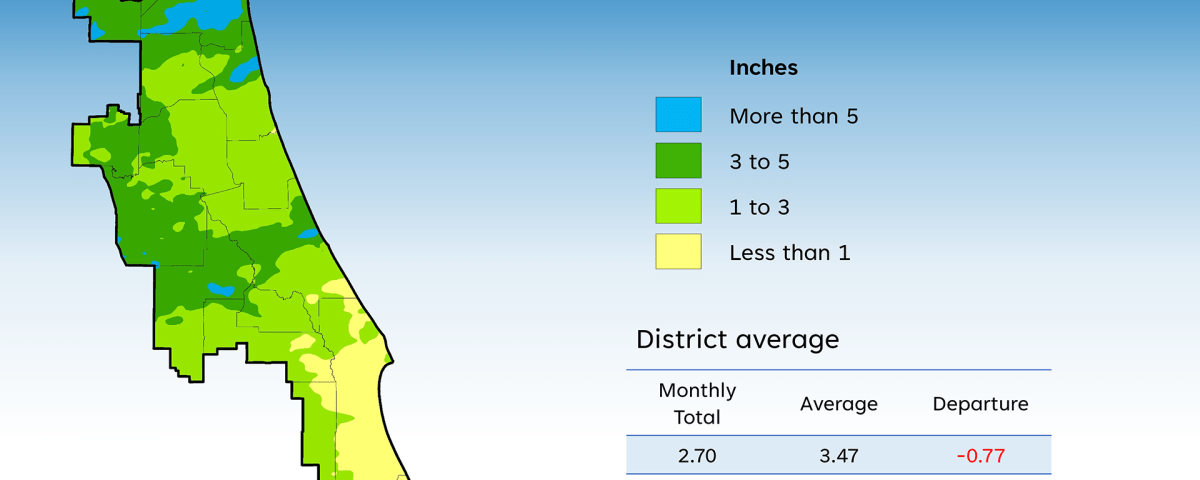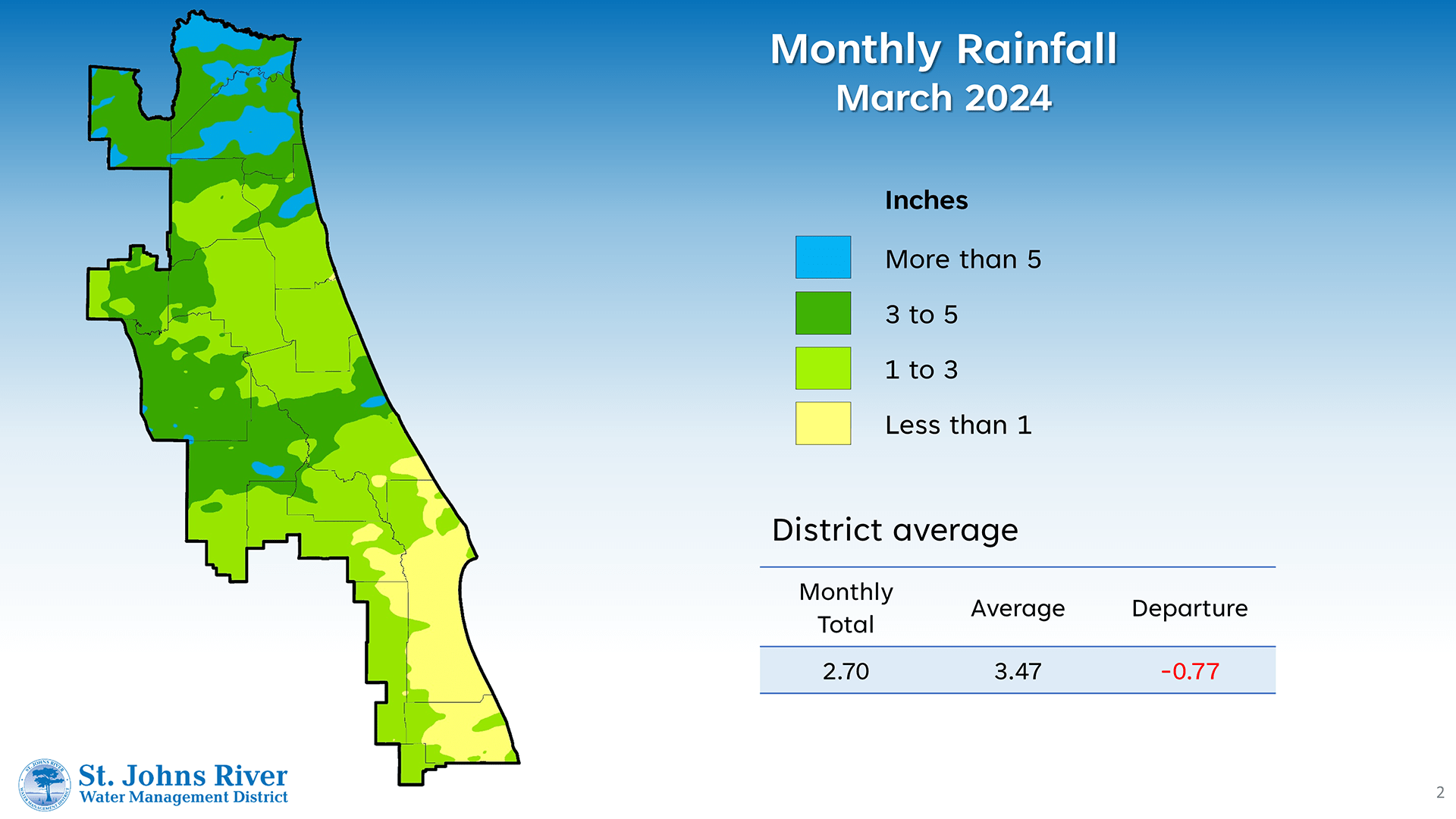March marks second consecutive month of below-average rainfall for the District

A map illustrates rainfall conditions in March across the St. Johns River Water Management District.

A map illustrates rainfall conditions in March across the St. Johns River Water Management District.
PALATKA, Fla., April 10, 2024 — In March, rainfall across the St. Johns River Water Management District was slightly below the monthly average, with frontal systems being the main source of precipitation. Northern counties received the majority of the rain, while southern counties experienced drier conditions. Despite variations, overall rainfall across the District remains above the annual average.
A comprehensive report outlining March’s hydrologic conditions was presented at the District’s Governing Board meeting on April 9, featuring the following highlights:
Rainfall
- Districtwide, March’s rainfall averaged 2.70 inches, just 0.77 below the monthly average.
- County-wide monthly rainfall totals ranged from a high of 4.80 inches in Nassau County, to a low of 0.86 inches in Brevard County.
- Over the past 12 months, the District has received above-average rainfall, with a cumulative total of 57.61 inches, surpassing the long-term average by 6.60 inches.
- County-wide totals varied between 53.37 inches in Alachua County to more than 63 inches in Volusia County.
Groundwater
- Upper Floridan aquifer conditions were varied but generally fell within the high or normal range by the end of March.
- Districtwide groundwater levels, expressed as a single index, fall within the 81th percentile, which is in the high range for this time of year.
Spring flows
- Silver Springs recorded a mean monthly flow of 697 cubic feet per second (cfs), or 451 million gallons per day (mgd), a 4 cfs decrease from February, falling just within the high range for this time of year.
- Blue Spring station in Volusia County reported a mean monthly flow of 153 cfs, or 99 mgd, within the normal range.
- Rock Springs experienced a slight decrease in mean monthly flow, just below the high range at 61 cfs (40 mgd).
- Wekiwa Springs exhibited a slight decrease, recording a mean monthly flow of 66 cfs (42 mgd), consistent with the seasonal norm.
For further insights into rainfall totals and other hydrologic data, visit www.sjrwmd.com.
Visit WaterLessFlorida.com for tips to help landscapes thrive while saving water and money. Follow the water conservation conversation at #sjrwmd #waterconservation #savewater.

